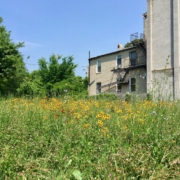Biodiversity
Biodiversity is defined broadly as the variety of form of life on the planet. The Baltimore Ecosystem Study seeks to document and understand biodiversity in cities, as the placement, removal or spontaneous occurrence of species happens in close proximity to people, and is influenced by the choices they make.
Why is it important to people’s lives?
Biodiversity is the foundation for all ecosystem services. Ecosystem services are taken as what humans value and derive from the environment, such as pollinators, the provision of clean water, removal of carbon dioxide from the atmosphere, and soil formation. Loss of biodiversity is known to be associated with a loss of services. Since more than 50% of the world’s population lives in cities, it is more important than ever to understand how urban biodiversity is organized and contributes to ecosystem services that people rely on in cities.
How does this research improve people’s lives?
The reasons why species co-occur is not completely understood for every environment. This is especially true for cities. This is because humans play such a strong role in how species occur, or do not occur, on the landscape. People may weed species out, apply insecticide to remove pests, ignore refuse that holds water for mosquitoes to breed, or provide food for birds. Taken together, there is a myriad of factors that contribute to biodiversity patterns in cities. Aesthetics aside, understanding these “mechanisms” improves people’s lives by learning what people prefer to see in green spaces that are desirable for neighborhood health, serve to function well in the environment, and provide the services people desire.
How do we do it?
Researchers at the Baltimore Ecosystem Study collaborate to understand biodiversity in a number of focal areas:
- They survey herbaceous plants on a regular basis across parcel types to look at patterns of species associations and functional attributes;
- They follow mosquito populations throughout the growing season to understand what environmental variables drive abundances, and the socio-economic factors associated with those variables;
- They monitor woody plant species distribution regularly in plots across the city to follow growth and translate those findings into the services trees provide;
- Regular monitoring of bird abundance and distribution during the summer months provides investigators with insight into how these species are using habitat is in cities.
Taken together, scientists, educators, policy-makers and students synthesize the findings from the biodiversity effort to better understand how and why species co-occur in the urban ecosystems, and how this translates into the ecosystem services people enjoy.





